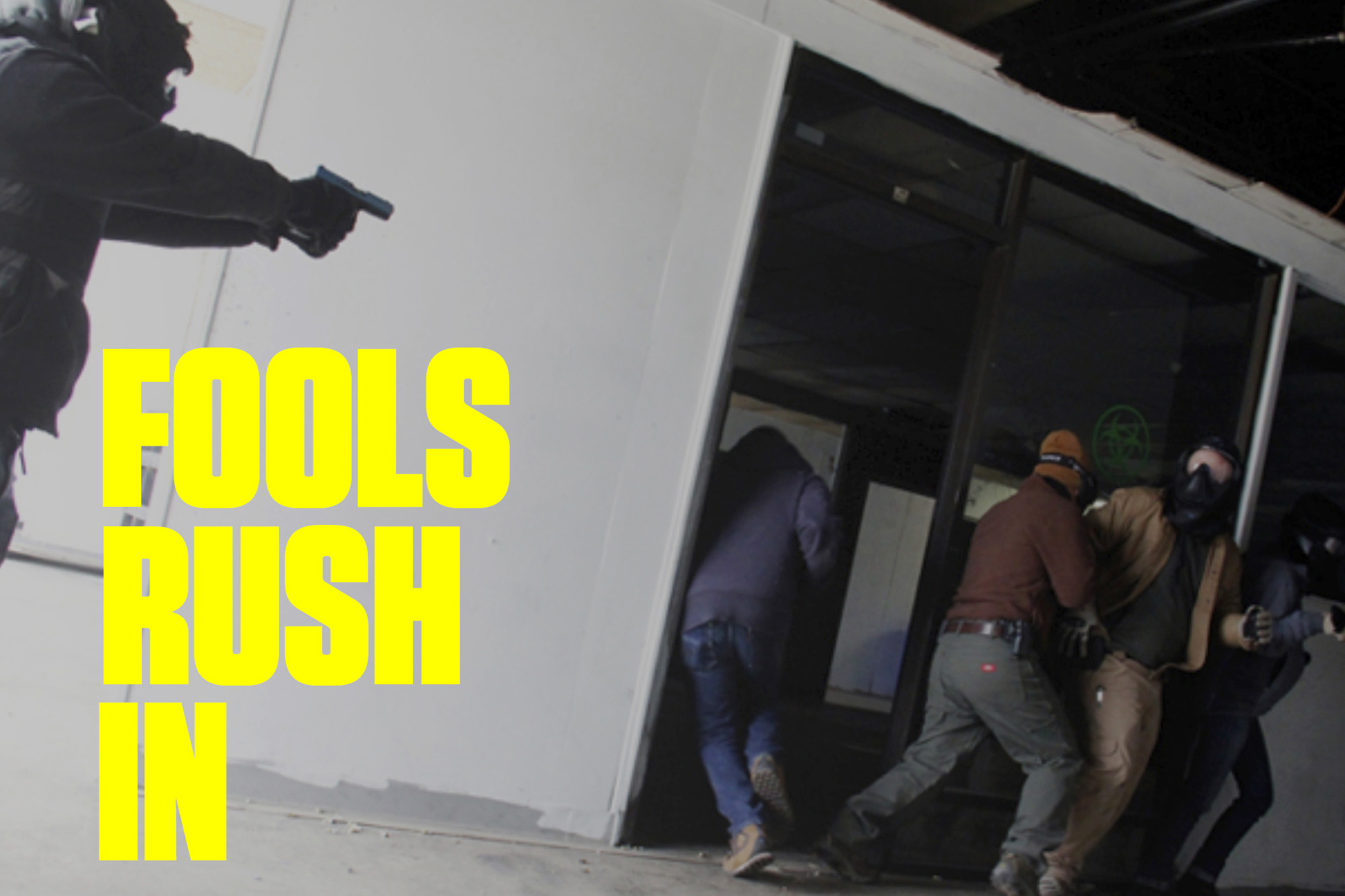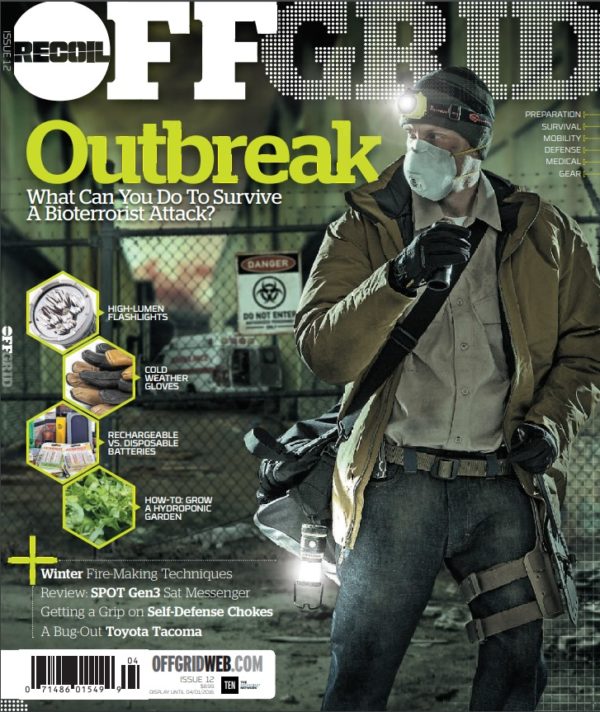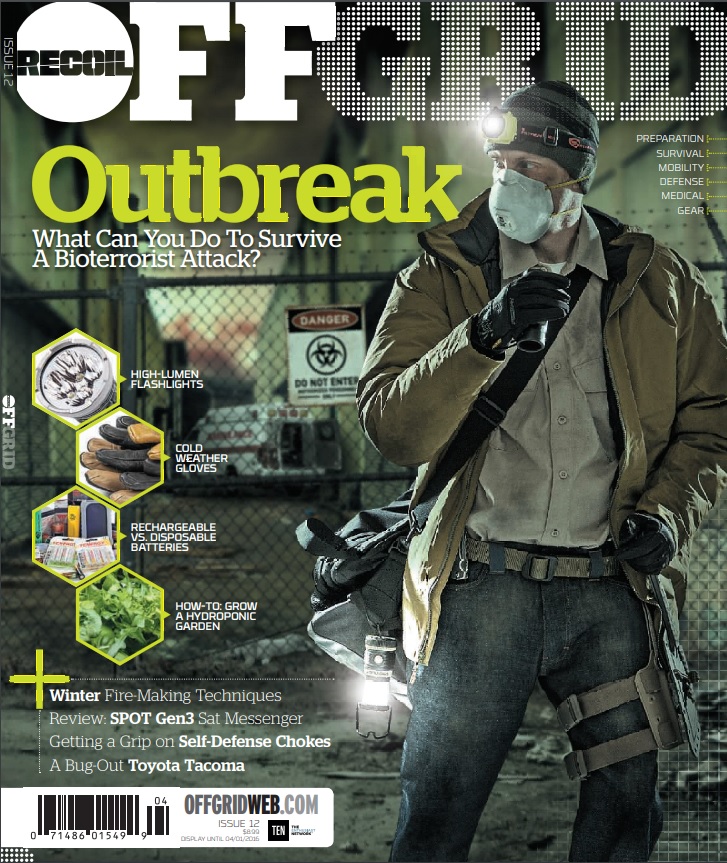RECOIL OFFGRID Preparation Fools Rush In: Considerations for Engaging an Active Shooter
In This Article
Editor's Note: The following article was originally published by our sister publication, Recoil magazine. Many of us who carry concealed firearms have considered how we'd react in the event of a mass shooting or active shooter scenario, but these situations are often more complex than we realize. Read on as Concealment editor Dave Merrill discusses the continuum of engagement relating to when you can, may, should, or must respond to a mass shooting.

Active shooters are not a novel problem in the United States. The immediate aftermath of yet another mass shooting gets minds reeling for solutions. Like any complex dilemma, any easy or pat answer you hear is unlikely to tell the entire story or be a panacea–but this article isn’t about criminal and ideological shooters in general or lawmaker and law enforcement responses, but responding to one that’s near you in particular. About how to best survive and solve deadly force encounters.
As a defender rather than a victimizer, the time and place of the initiation of violence is not up to you. The other guy virtually always gets the first vote. If there’s a shooting nearby, regardless of the motivation of the shooter, the common advice you’ll hear is to not involve yourself–that you will ‘just make things worse’. There are two problems with that: sometimes you have to get involved, and other times you’re compelled to get involved.

People that are high responders can’t help but get into the mix. They are the people that help strangers on the side of the road, stop and render aid during car accidents, and are often drawn to careers in military, law enforcement, and EMS. They are the heroes.
If you are a high responder, someone who is prone to intervention, this article is for you.
The fact is you can make the problem worse. In life there are scant few situations you can’t make worse through bad actions and flawed decision making, your motivation be damned. The time to consider and game out your actions is not in the moment, but before. We train so that we have known solutions for problems. While shooting classes can be excellent for shooting mechanics like the draw speed, accuracy, and split times, the vast majority aren’t about problem-solving.
This article is about a continuum of engagement which we first learned from Tamara Keel. Being honest with yourself and your capabilities, identifying and filling gaps in your training, is paramount if you’re going to win the day.
Most will be familiar with the idiom, “just because you can, doesn’t mean you should”. While that’s true, it’s more of a philosophical statement rather than a rubric.
Because it’s a continuum, every consideration and conclusion compounds onto the next. In other words, you can’t jump to the next category unless the previous is fulfilled. The rules of deadly force in your jurisdiction still apply and run in conjunction with these considerations. Think of this as a thought exercise to weigh potential outcomes in advance–in the moment is not the time to figure out what you should be doing. It applies to more than active shooters, but to any emergency situation. And as always, some decisions can be made for you. Not everything is in your control, and it pays dividends to know what you can.
CAN
Do you have the skill, capability, and time to solve this problem?
The internet-tough-guy response is rarely thoughtful or close to reality. A dozen terrorists storming a Walmart with AKs are not going to be stopped by one person with a wheel gun. Real-life is not John Wick, and one unskilled person with a rifle often trumps a skilled handgun shooter by initiative, range, firepower, and mere ease of use–let alone a dozen people with rifles. These two men chased down and fired more than a dozen shots into their intended victim, and were out of the car and back in 14 seconds. Realistically, do you think that is a situation you can solve with a CCW?
Simply carrying a firearm does not imbue one with special powers and the ability to handle all situations. A firearm is a tool that can be a force multiplier but it doesn’t make one Captain America.
However, just because you cannot reasonably believe you can solve the problem with a gun does not mean you can't help. You can call 911 and provide clear information to law enforcement. You can help people escape. You can provide aid to those injured.
MAY
Do you know enough to understand the totality of circumstances?
No one runs into a potentially deadly active shooter encounter believing that their actions won’t be justified, and yet bad shoots and mistaken identity happen regularly. It is not uncommon for trained law enforcement to inadvertently shoot plainclothes officers. Some situations are clear-cut like an active shooter firing into a crowd, while others not so much, like two people in plainclothes shooting it out on the street. If trained LEOs can get it wrong, so can you.
Is deadly force or potential deadly force in these circumstances legally justified?
Legal justification of deadly force makes the difference for a criminal conviction, but not the potential of a drawn-out trial that bankrupts you even if it ends with an acquittal, let alone potential civil suits after (jurisdiction-dependent).
SHOULD
Will your successful intervention definitely save lives?
Here is where those that are high responders, a great many people reading this article, especially those who sought law enforcement as a career, will feel a strong personal duty to intervene in these situations. They will risk their lives to save others. This is not a legal obligation but a moral one. Sworn law enforcement officers don’t have a legal duty to intervene even though many will, to say nothing of someone with a CCW.
Do you have other responsibilities that will be neglected if you choose to intervene?
The big one here are people in your immediate charge: children and other family members that rely on you to protect them. For considerations of carrying with kids in tow, give this article from Melody Lauer a read.
MUST
Will me or mine be killed if I do not intervene?
This one is self-explanatory. If inaction means death, then action is required.
…and the last part we don't like to think about: Sometimes compliance is an option.
If someone gets the drop on you, often the best course of action is to comply, or at least appear to comply, until you can exploit or engineer an opportunity. Even longtime LEO Greg Ellifritz of Active Response Training, who earned the moniker Gorillafritz due to being built like a two-legged refrigerator, has complied when an AK-47 was shoved into his face. Compliance is certainly no guarantee either, and Gorillafritz has written about this as well.
There are some big caveats to consider and take to heart if you’re planning on going in: You are increasing your odds of dying, both at the hands of the Bad Guy and also by the hands of a Good Guy. You can perform every action perfectly and still end up dead through no fault of your own–even Special Forces soldiers are sometimes killed by teenagers. First responders to the scene, be they law enforcement or CCWr’s themselves (other people, exactly like you), are also making their own quick assessments and calculus.
You still may end up with a round through your noggin’ if you are mistaken for a threat, it being an unfortunate mistake will not change that fact. John Hurley stopped an active shooter but ended up being shot by police. It is unfortunate, but it is the reality. If you can't make peace with that, you shouldn't respond.
Also worth mentioning is that there’s always the potential of criminal and civil liability whenever that pistol comes out of the holster. Sure, George Zimmerman ended up being acquitted of all charges, after well over a year of legal troubles, countless dollars lost, and a lifetime stain on his name. Do you honestly think Zimmerman would perform the same actions, the same way, if he had the opportunity for a re-do of that fateful day?
But people like Stephen Willeford, who successfully interdicted a murderous active shooter–if they could do it again they often regret not getting there sooner.
Your imagination exists to help you game through different scenarios, but mere imagination is not enough. One thing that makes humans particularly adept problem-solvers is our ability to learn from the experience of others. There are YouTube channels like Active Self Protection which are expressly designed to put you in the shoes of a defensive shooter and are a tremendous resource. When combined with scenario-based force-on-force training like that taught by Craig Douglas of Shivworks, it can put you ahead of the curve. Aaron Cowan of Sage Dynamics has an excellent piece on citizen response to active shooters. As a pound of prevention is worth an ounce of cure, this article on OFFGRIDweb is about early warning signs of workplace violence.
Just because a gun doesn't solve the immediate problem doesn't mean that you're helpless. Regardless of where you fall on the response line—always be mindful of your own capabilities, responsibilities, and potential outcomes. The lives of you, yours, and others depend on it.
 STAY SAFE: Download a Free copy of the OFFGRID Outbreak Issue
STAY SAFE: Download a Free copy of the OFFGRID Outbreak Issue
No Comments